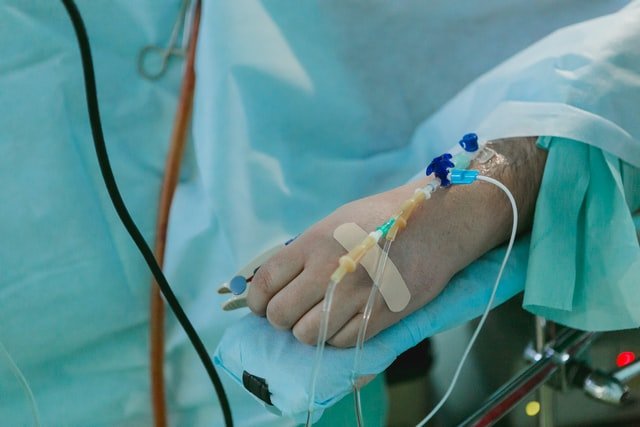- Home
- Addiction Treatment
- Dual Diagnosis
- Foetal Alcohol Syndrome
Foetal Alcohol Syndrome
Also known as FAS, foetal alcohol syndrome concerns the central nervous system and growth issues.
This can also affect memory, attention span, learning and communication, along with vision and hearing.
As such, people suffering from foetal alcohol syndrome ted to experience a notably lower quality of life.
This is why it is so important to avoid substance use during pregnancy.
How Does Foetal Alcohol Syndrome Work?

Foetal alcohol spectrum disorders are conditions that are caused by being exposed to alcohol before their birth.
This affects the fetus both physically and mentally, often with a mix of these problems.
This alcohol is exposed through the umbilical cord during pregnancy; there is little known about the limits of ‘safe exposure’, but it’s evident that alcohol causes development issues.
Foetal alcohol spectrum disorder represents a wide range of effects.
This can range from mild to severe, but usually presents as:
- Very light in body weight
- Lack of coordination
- Hyperactivity
- Memory and attention difficulty
- Learning difficulties
- Reduced sight and hearing
- Organ issues
- Shorter in height than usual
- A smaller head
- Abnormal facial features
These symptoms are irreversible -once a certain amount of alcohol is consumed, the damage to the development of the baby is done.
The more you drink, the more risk you are putting your baby at.
Causes And Effects Of Foetal Alcohol Syndrome

When you drink whilst pregnant, the alcohol reaches your fetus by entering your bloodstream and crossing the placenta.
Alcohol causes high blood alcohol concentration in the fetus, rather than in the mother’s body.
The fetus’ body metabolises alcohol a lot more slowly than an adult does.
Alcohol inhibits the amount and delivery of oxygen and optimal nutrition to the baby in development.
Exposure to alcohol before birth can harm all the development tissues and organs, causing permanent and irreversible physical deformity and brain damage.
FAS can cause individuals to grow up with:
- ADHD
- Aggressive issues
- Alcohol or drug abuse disorders
- Mental health issues such as depression and anxiety
- Inappropriate sexual behaviours
- Accidents
- Homicidal or suicidal thoughts
- Not finishing school
- Employment issues
The Beginning of FAS: Medical Literature

The effects of alcohol have been known for hundreds of years, but it was the independent work of Jones and Smith in 1937 that led to observations regarding maternity.
Since alcoholics also tend to use other drugs and lead unhealthy lifestyles, it was not first noticed that it was the ethanol that caused FAS.
Since the 1970s, there have been three main types of epidemiological research methods, each of which studies:
- Foetal Alcohol Syndrome (FAS)
- Alcohol-Related Birth Defects (ARBD)
- Alcohol-Related Neurodevelopment Disorders (ARND)
These three main methods are:
1. Passive Surveillance

Researchers first establish a criteria for defining diagnosis, and then reviewers look for documents or proof of cases where children have been born or diagnosed with FAS.
This includes birth certificates, registries and hospital medical charts.
This method utilises existing health care records, and therefore an inexpensive approach.
However, the conditions are complex and often have multiple other indicators of issues, making them more difficult to identify.
2. Clinical-Based Studies

Clinical–based studies provide more of the common and current knowledge that is widely talked about.
The consistent design means that the methodology is controlled, as researchers collect data from mothers as they go through the various stages and months of pregnancy.
This method means that we have a rigorous and vital opportunity to lend data to the history of the maternal category.
However, because the subjects are volunteers, they are less likely to be at a high risk of FAS, as they are less likely to attend clinics at all.
3. Active Case Ascertainment
Active case ascertainment focuses on large populations of specific areas.
These studies actively look for children who might be suffering from FAS, sometimes also recruiting the mothers to collect information on behaviour and risk factor.
Despite being active labour and a longer process, this method may produce the most complete data known regarding the prevalence of FAS.
Maternal Risk Factors

May and Gossage outlined the maternal risk factors associated with FAS, including:
- Maternal age
- Lower socioeconomic status
- Binge drinking occurrences
- Poor social and psychological indications
Since these findings, it has been a difficult challenge to establish the assessment techniques of definitive diagnosis features of FAS.
Due to this, studies that attempt to determine FAS, ARND, and ARBD tend to be limited and tend to leave gaps in their reasoning and justification.
Risk Factors and Life Outcomes

With a recognisable pattern of malformation, clinical descriptions of FAS suggest 5 operational adverse outcomes and around 20 risk factors.
In a study of 415 patients with FAS (with a mean age of 14 (6-51)), 80% of them were not raised with their biological mothers.
Of the 415 subjects, there were 236 males and 179 females.
35% of the patients were children, 29% were adolescents, and 46% were adults.
Most of the patients had known their parents for around half their life (80%), and 20% of patients had known their patients their whole life.

Regarding education, the statistics found that:
- 61% experienced disrupted school experiences, with over 42% being in special education.
- Around 53% of the adolescents with FAS had been suspended from education, over 25% dropped out, and around 29% had been expelled from school.
- The most common learning difficulty was social, with over 58% stating that they had difficulty getting along with friends in class, and 55% stated they were repeatedly disruptive in class.

Regarding legal trouble:
- 60% had been in trouble with the law, with 19% in males and 8% in females.
- Among adolescents and adults, the most frequent law crimes were against persons (45%). This includes the likes of theft, assault, burglary and violence.
- The percentage of these people charged increased in each age category, from 13% of children, 67% of adolescents and 87% of adults.
- 50% had been in jail, prison or a psychiatric hold.

With concern to hospitalisation and sexual exposure:
- 8% of the children had been hospitalised, along with 50% of adolescents and adults.
- 49% of adolescents and adults had experienced inappropriate sexual behaviour, with 20% of them mentioning exposure and 19% of them mentioning inappropriate touching.
- For adolescents specifically, 26% mentioned promiscuity and 18% mentioned inappropriate sexual advances.

The prevalence of substance abuse was also a significant factor in the study:
- 35% reported having alcohol or drug related problems, with alcohol (33%) mentioned more times than drugs (23%).
- It is notable that all of the drug mentions also included alcohol, and that 65% of those with alcohol abuse went on to use street drugs.
It was noted that ‘inappropriate sexual behaviours on repeated occasions’ was the most common life outcome, increasing with every age category.
This ranged from 39% in children, 48% in adolescents and 52% in adults.
These effects could have been halved by diagnosing FAS at an earlier stage, or by having a solid, stable, healthy environment to grow up in.

These environmental factors are important, as there is a distinct association between prenatal alcohol abuse and child neglect.
Of these 415 patients, they all showed a history of:
- Maternal alcohol abuse
- Growth deficiency at birth, in height and weight
- A pattern of abnormalities such as:
- Facial disfigurement
- Central nervous system issues
- Hyperactivity
- Attention-deficit
- Learning disabilities
- Seizures
The IQ scores for the patients represented a range of intellectual ability, but the group mean scored below the population norm in IQ, achievements and behavioural scores.
There were some patients with FAE, foetal alcohol effects, and they had a higher average IQ than those with FAS.
The mean IQ for those with FAS was 80, with the mean IQ for FAE being 88.
The mean IQ score for the population was over 100.
The Diagnostic Criteria for FAS

In the severely affected babies with FAS, it can be diagnosed at birth.
However, the most prominent physical features are not obvious until at least 8 months of age.
Here are the most common signs to look for in a FAS baby:
- Small eyes
- Thin upper lip
- Upturned nose
- Very smooth skin between the upper lip and nose
- Deformed fingers, and limbs
- Vision and hearing issues
- Smaller than usual (shorter)
- Lighter in weight than a usual baby
Here are the clinical diagnostic criteria as well:
- Confirmed maternal alcohol exposure
- Evidence of a characteristic pattern of facial abnormalities including; short palpebral fissures and abnormalities in the premaxillary zone.
- Evidence of retardation in growth
- Evidence of CNS abnormalities of the cranium
- Evidence of a complex pattern of behaviour or cognitive abnormalities that are inconsistent with standard developmental level. This cannot be explained by family background or environments alone, such as poor school performance or lack of judgment.
These lists are not exhaustive, so if you are worried you should see a medical professional
What Can I Do?

If you are trying to get pregnant and are worried about your alcohol use, the best thing you can do is get help.
Our helpline is courteous, professional, entirely discreet and 100% free.
For expert advice and all the information you need to get sober, call our team today.
We are here for you.


